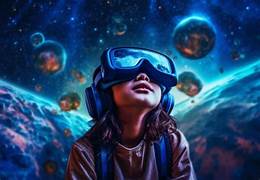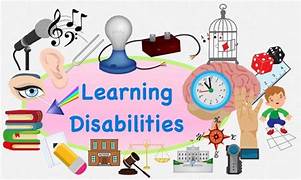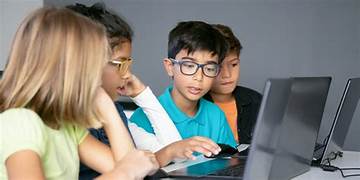The Future of Virtual Reality in Education
Virtual Reality (VR) has long been a buzzword in the tech world, primarily associated with gaming, entertainment, and high-tech industries. However, its potential in education is becoming increasingly recognised. As VR technology continues to evolve, it holds the power to transform the way we approach learning, providing immersive, engaging, and highly interactive experiences that go far beyond traditional teaching methods.
Imagine students stepping inside historical events, exploring distant planets, or experiencing the inner workings of the human body—all without leaving the classroom. This is the future of education with VR. By creating fully immersive environments where students can interact with subjects, VR enables a deeper understanding of complex topics. From medical training to history lessons, VR has the potential to revolutionise learning, making it more engaging, efficient, and accessible.
In this article, we’ll delve into the future of VR in education, its benefits, challenges, and how it’s poised to reshape the classroom experience.
What is Virtual Reality?
Virtual Reality (VR) is a technology that creates simulated environments, enabling users to immerse themselves in a completely digital world. Unlike Augmented Reality (AR), which overlays digital content onto the real world, VR creates a fully immersive experience by blocking out the physical environment and replacing it with a virtual one.
Using VR headsets, students can explore new worlds, interact with 3D objects, and engage in simulations that would be impossible or dangerous in real life. The potential applications in education are vast, from allowing students to take virtual field trips to enabling hands-on learning experiences in subjects such as medicine, engineering, and the arts.
The Benefits of VR in Education
1. Immersive Learning Experiences
One of the most significant advantages of VR in education is its ability to create immersive learning experiences. By placing students in a fully digital environment, VR allows them to interact with the subject matter in a more tangible way. For example, students learning about Ancient Rome can virtually walk through the streets of a recreated Roman city, or biology students can tour the human circulatory system. This level of immersion enhances engagement and retention, as students can experience and experiment with concepts rather than simply reading about them.
2. Hands-On Learning
VR makes it possible to conduct experiments and practice skills in a safe, controlled virtual environment. Medical students, for example, can perform surgeries on virtual patients, while engineering students can design and test complex structures without needing physical resources. This hands-on approach enhances practical learning and allows for real-time feedback, enabling students to learn through trial and error in a way that traditional education does not always permit.
3. Accessibility and Inclusivity
Virtual Reality can break down geographical, physical, and financial barriers to education. Students in remote areas or underserved communities can access high-quality educational content that may otherwise be unavailable to them. Additionally, VR can cater to students with disabilities by offering tailored learning experiences, such as visual simulations for those with hearing impairments or interactive environments for students with mobility challenges.
4. Cost-Effective Learning
While VR technology can be expensive, its long-term cost-effectiveness is undeniable. Traditional educational tools, such as textbooks, lab materials, and field trips, can be costly. In contrast, VR allows for repeated use without the need for physical resources, providing a more sustainable and cost-effective solution. Furthermore, virtual field trips to places like the Louvre Museum or the Great Wall of China can be done at a fraction of the cost of organising a real-life trip.
5. Personalised Learning
VR has the ability to provide personalised learning experiences that cater to the unique needs of each student. By using adaptive learning technologies, VR can adjust the pace, difficulty, and content of lessons based on a student’s progress and learning style. This ensures that every student, regardless of ability, can learn at their own pace, receiving the support they need to succeed.
How VR is Already Being Used in Education
1. Virtual Field Trips
One of the most popular uses of VR in education is virtual field trips. Students can explore historical landmarks, travel to outer space, or visit distant countries, all without leaving their classroom. These trips provide unique learning opportunities that would be impossible to replicate in real life, broadening students’ horizons and helping them connect with the world around them.
2. Medical and Healthcare Training
In the medical field, VR is being used for everything from anatomy lessons to surgical training. Students can practice complex procedures on virtual patients, honing their skills in a risk-free environment. For example, VR simulations allow medical students to perform surgeries or administer injections, improving their practical skills before working with real patients.
3. Engineering and Architecture
VR is being used in engineering and architecture to create 3D models of buildings, bridges, and other structures. Students can explore and modify these models, gaining a better understanding of design principles and construction processes. VR allows for real-time adjustments, enabling students to test different scenarios and outcomes, which is a far more interactive and engaging way to learn than simply studying blueprints.
4. Language Learning
In language education, VR provides immersive environments where students can practice speaking and listening in real-world scenarios. For example, learners can interact with virtual characters in a foreign country, improving their language skills while experiencing the culture firsthand. This immersion is far more effective than traditional classroom methods, as it allows students to practice in a dynamic, contextual environment.
The Future of VR in Education
As VR technology continues to advance, its applications in education are only set to grow.
1. AI-Driven Virtual Tutors
The future of VR in education may see the rise of AI-powered virtual tutors, which can offer personalised guidance and instruction to students. These tutors will be able to adapt lessons based on a student’s progress, providing instant feedback and tailored support. This would make learning more efficient, with students receiving the exact help they need when they need it.
2. Fully Immersive Classrooms
In the future, we may see entire classrooms move to virtual environments. Imagine a scenario where students from all over the world come together in a digital classroom, where they can interact with both their peers and instructors in real-time. Such classrooms would provide endless opportunities for collaboration, learning, and exploration, creating a truly global educational experience.
3. Virtual Reality for Special Education
VR has the potential to revolutionise special education by offering customised learning environments for students with disabilities. For example, VR can be used to create simulations for students with autism to practise social interactions or help students with mobility impairments engage in activities that would otherwise be difficult or impossible. The possibilities are endless when it comes to creating tailored experiences that meet the needs of all learners.
4. Gamification and Virtual Learning Platforms
The future of VR in education will likely involve even more gamification and interactive learning platforms. By blending education with entertainment, students can be encouraged to learn in a fun, engaging, and motivating way. Virtual reality games that teach history, maths, or science will become increasingly popular, offering students a dynamic and exciting way to acquire new knowledge.
Challenges of Implementing VR in Education
1. High Initial Costs
While VR is expected to become more affordable over time, the initial costs of VR hardware and software can be prohibitively expensive for many schools and educational institutions. This is a major barrier to widespread adoption, particularly in underfunded or rural areas.
2. Technical Challenges
The integration of VR into classrooms requires robust technological infrastructure, including high-speed internet, VR headsets, and powerful computers. Schools need to invest in both the technology and the necessary training for teachers to effectively use VR in the classroom.
3. Accessibility
Not all students have equal access to the technology needed for VR learning. In many regions, students may lack the devices or internet connection necessary to experience VR, leading to disparities in education.
Conclusion
The future of Virtual Reality in education is bright, with the potential to revolutionise the way students learn and interact with the world around them. From immersive field trips and hands-on medical training to personalised learning experiences, VR is changing the landscape of education. While challenges remain in terms of cost and accessibility, the benefits of VR in fostering engagement, accessibility, and real-world learning make it a valuable tool for the future of education. As VR technology advances and becomes more widely available, we can expect to see even more innovative uses in the classroom, creating a new era of learning.
FAQs
How is VR used in education?
VR is used in education for immersive field trips, medical training, language learning, and interactive simulations, enhancing engagement and understanding.
Is VR technology expensive for schools?
Yes, the initial cost of VR hardware and software can be high, which makes it challenging for schools with limited budgets to implement.
Can VR replace traditional classrooms?
While VR offers immersive learning experiences, it is unlikely to fully replace traditional classrooms. It is more likely to complement existing teaching methods.
How does VR help with special education?
VR can create customised learning environments for students with disabilities, offering tailored experiences that help them engage with the content and practice essential skills.
Will VR become more affordable?
As the technology advances, the cost of VR hardware and software is expected to decrease, making it more accessible to schools and students.
What are the benefits of VR in medical education?
VR allows medical students to practice procedures on virtual patients, enhancing their skills in a risk-free environment before working with real patients.
Can VR be used for remote learning?
Yes, VR can enable remote learning by providing virtual classrooms and experiences that students can access from anywhere, bridging geographical gaps in education.






